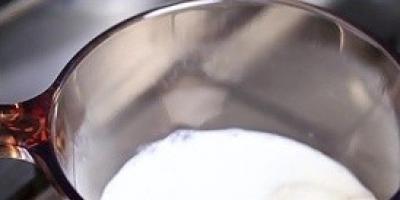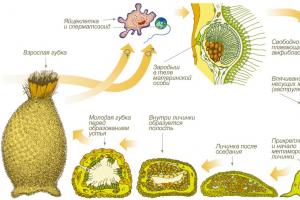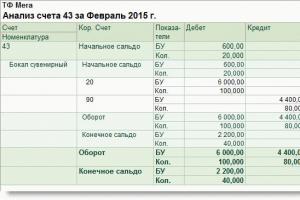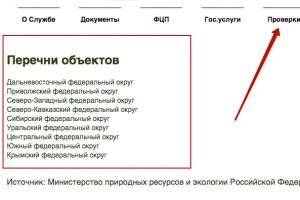Electric arc is a type of discharge characterized by high current density, high temperature, high gas pressure and a small voltage drop across the arc gap. In this case, intense heating of the electrodes (contacts) takes place, on which so-called cathode and anode spots are formed. The cathode glow is concentrated in a small bright spot, the hot part of the opposite electrode forms an anode spot.
In the arc, three regions can be noted, very different in the nature of the processes occurring in them. Directly adjacent to the negative electrode (cathode) of the arc is the region of the cathode voltage drop. Next comes the plasma arc barrel. Directly adjacent to the positive electrode (anode) is the region of the anode voltage drop. These areas are shown schematically in Fig. 1.

Rice. 1. The structure of the electric arc
The sizes of the cathode and anode voltage drop regions in the figure are greatly exaggerated. In reality, their extent is very small. For example, the extent of the cathode voltage drop is of the order of the path of free electron movement (less than 1 μ). The length of the region of the anode voltage drop is usually somewhat greater than this value.
Under normal conditions, air is a good insulator. Thus, the voltage required to break down an air gap of 1 cm is 30 kV. In order for an air gap to become a conductor, it is necessary to create a certain concentration of charged particles (electrons and ions) in it.
How does an electric arc occur?
An electric arc, which is a flow of charged particles, at the initial moment of contact divergence arises as a result of the presence of free electrons in the gas of the arc gap and electrons emitted from the cathode surface. Free electrons located in the gap between the contacts move at high speed in the direction from the cathode to the anode under the influence of forces electric field.
The field strength at the beginning of contact divergence can reach several thousand kilovolts per centimeter. Under the influence of the forces of this field, electrons are ejected from the surface of the cathode and move to the anode, knocking out electrons from it, which form an electron cloud. The initial flow of electrons created in this way subsequently forms intense ionization of the arc gap.
Along with ionization processes, deionization processes occur in parallel and continuously in the arc. Deionization processes consist in the fact that when two ions of different signs or a positive ion and an electron come together, they are attracted and, colliding, are neutralized; in addition, charged particles move from the combustion area of souls with a higher concentration of charges to the environment with a lower concentration of charges. All these factors lead to a decrease in the temperature of the arc, to its cooling and extinction.

Rice. 2. Electric arc
Arc after ignition
In a steady combustion mode, the ionization and deionization processes in it are in equilibrium. The arc barrel with an equal number of free positive and negative charges is characterized by a high degree of gas ionization.
A substance whose degree of ionization is close to unity, i.e. in which there are no neutral atoms and molecules is called plasma.
The electric arc is characterized by the following features:
1. A clearly defined boundary between the arc shaft and the environment.
2. High temperature inside the arc barrel, reaching 6000 - 25000K.
3. High current density and arc barrel (100 - 1000 A/mm 2).
4. Small values of the anode and cathode voltage drop and practically does not depend on current (10 - 20 V).
Current-voltage characteristics of an electric arc
The main characteristic of a DC arc is the dependence of the arc voltage on the current, which is called current-voltage characteristic (VAC).
An arc occurs between the contacts at a certain voltage (Fig. 3), called the ignition voltage Uз and depending on the distance between the contacts, on the temperature and pressure of the medium and on the speed of divergence of the contacts. The arc extinction voltage Ug is always less than the voltage Uz.

Rice. 3. Volt-ampere characteristic of a DC arc (a) and its equivalent circuit (b)
Curve 1 represents the static characteristic of the arc, i.e. obtained by slowly changing the current. The characteristic has a falling character. As the current increases, the arc voltage decreases. This means that the resistance of the arc gap decreases faster as the current increases.
If, at one speed or another, the current in the arc is reduced from I1 to zero and at the same time the voltage drop across the arc is recorded, then curves 2 and 3 will be obtained. These curves are called dynamic characteristics.
The faster the current is reduced, the lower the dynamic current-voltage characteristics will lie. This is explained by the fact that when the current decreases, arc parameters such as the barrel cross-section and temperature do not have time to quickly change and acquire values corresponding to a lower current value at steady state.
Voltage drop across the arc gap:
Ud = U з + EdId,
Where U z = U k + U a - near-electrode voltage drop, Ed - longitudinal voltage gradient in the arc, Id - arc length.
It follows from the formula that as the arc length increases, the voltage drop across the arc will increase, and the current-voltage characteristic will be located higher.
Electric arcs are dealt with when designing electrical switching devices. The properties of the electric arc are used in and in.
2.1. NATURE OF WELDING ARC
An electric arc is one of the types of electrical discharges in gases, in which the passage of an electric current through a gas gap under the influence of an electric field is observed. The electric arc used to weld metals is called a welding arc. The arc is part of the electrical welding circuit and experiences a voltage drop across it. When welding with direct current, the electrode connected to the positive pole of the arc power source is called the anode, and to the negative pole is called the cathode. If welding is carried out on alternating current, each of the electrodes is alternately an anode and a cathode.
The space between the electrodes is called the arc area or arc gap. The length of the arc gap is called the arc length. Under normal conditions at low temperatures, gases consist of neutral atoms and molecules and do not have electrical conductivity. The passage of electric current through a gas is possible only if it contains charged particles - electrons and ions. The process of formation of charged gas particles is called ionization, and the gas itself is called ionized. The appearance of charged particles in the arc gap is caused by the emission (emission) of electrons from the surface of the negative electrode (cathode) and the ionization of gases and vapors located in the gap. The arc burning between the electrode and the welding object is a direct arc. Such an arc is usually called a free arc, in contrast to a compressed arc, the cross-section of which is forcibly reduced due to the burner nozzle, gas flow, and electromagnetic field. The arc is excited as follows. When there is a short circuit, the electrode and the parts where they touch the surfaces heat up. When the electrodes are opened from the heated surface of the cathode, electrons are emitted - electron emission. The yield of electrons is primarily associated with the thermal effect (thermionic emission) and the presence of a high-intensity electric field at the cathode (field emission). The presence of electron emission from the cathode surface is an indispensable condition for the existence of an arc discharge.
Along the length of the arc gap, the arc is divided into three regions (Fig. 2.1): cathode, anode and the arc column located between them.
The cathode region includes the heated surface of the cathode, called the cathode spot, and the part of the arc gap adjacent to it. The length of the cathode region is small, but it is characterized by increased tension and the processes of obtaining electrons occurring in it, which are a necessary condition for the existence of an arc discharge. The cathode spot temperature for steel electrodes reaches 2400-2700 °C. It releases up to 38% of the total arc heat. The main physical process in this area is electron emission and acceleration of electrons. The voltage drop in the cathode region of the IR is about 12-17 V.
The anode region consists of an anode spot on the surface of the anode and part of the arc gap adjacent to it. The current in the anode region is determined by the flow of electrons coming from the arc column. The anode spot is the site of entry and neutralization of free electrons in the anode material. It has approximately the same temperature as the cathode spot, but as a result of electron bombardment, more heat is released on it than on the cathode. The anode region is also characterized by increased tension. The voltage drop Ua in it is of the order of 2-11 V. The extent of this region is also small.
The arc column occupies the greatest extent of the arc gap, located between the cathode and anode regions. The main process of formation of charged particles here is gas ionization. This process occurs as a result of the collision of charged (primarily electrons) and neutral gas particles. With sufficient collision energy, electrons are knocked out of gas particles and positive ions are formed. This ionization is called collision ionization. A collision can occur without ionization, then the collision energy is released in the form of heat and goes to increase the temperature of the arc column. The charged particles formed in the arc column move to the electrodes: electrons to the anode, ions to the cathode. Some of the positive ions reach the cathode spot, while the other part does not, and by adding negatively charged electrons to themselves, the ions become neutral atoms.
This process of particle neutralization is called recombination. In the arc column, under all combustion conditions, a stable equilibrium is observed between the processes of ionization and recombination. In general, the arc column has no charge. It is neutral, since in each section of it there are simultaneously equal numbers of oppositely charged particles. The temperature of the arc column reaches 6000-8000 °C or more. The voltage drop in it (Uc) varies almost linearly along the length, increasing with increasing length of the column. The voltage drop depends on the composition of the gaseous medium and decreases with the introduction of easily ionized components into it. Such components are alkaline and alkaline earth elements (Ca, Na, K, etc.). The total voltage drop in the arc is Ud=Uk+Ua+Uc. Taking the voltage drop in the arc column in the form of a linear dependence, it can be represented by the formula Uc=Elc, where E is the tension along the length, lc is the length of the column. The values of IR, Ua, E practically depend only on the material of the electrodes and the composition of the arc gap medium and, if they remain unchanged, remain constant at different conditions welding Due to the small extent of the cathode and anode regions, it can be considered practically 1s = 1d. Then we get the expression
II)( = a + Н)(, (2.1)
showing that the arc voltage directly depends on its length, where a = ik + ia; b=E. An indispensable condition for obtaining a high-quality welded joint is stable arc burning (its stability). By this we mean such a mode of its existence in which the arc long time burns at specified values of current and voltage, without interruption or transition to other types of discharges. With a stable burning of the welding arc, its main parameters - current and voltage - are in a certain interdependence. Therefore, one of the main characteristics of an arc discharge is the dependence of its voltage on the current strength at a constant arc length. A graphical representation of this dependence when operating in static mode (in a state of stable arc burning) is called the static current-voltage characteristic of the arc (Fig. 2.2).
As the length of the arc increases, its voltage increases and the curve of the static current-voltage characteristic rises; higher, with a decrease in the length of the arc, it drops lower, while qualitatively maintaining its shape. The static characteristic curve can be divided into three regions: falling, hard and rising. In the first region, an increase in current leads to a sharp drop in arc voltage. This is due to the fact that with increasing current strength, the cross-sectional area of the arc column and its electrical conductivity increase. Arc burning in regimes in this region is characterized by low stability. In the second region, the increase in current strength is not associated with a change in arc voltage. This is explained by the fact that the cross-sectional area of the arc column and active spots changes in proportion to the current strength, and therefore the current density and voltage drop in the arc remain constant. Arc welding with a rigid static characteristic is widely used in welding technology, especially in manual welding. In the third region, as the current increases, the voltage increases. This is due to the fact that the diameter of the cathode spot becomes equal to the diameter of the electrode and cannot increase further, while the current density in the arc increases and the voltage drops. An arc with increasing static characteristics is widely used in automatic and mechanized submerged arc and shielding gas welding using thin welding wire.
|
|
Rice. 2.3. Statistical current-voltage characteristic of the arc at different speeds electrode wire feed: a - low speed; b - average speed, c - high speed
When mechanized welding with a consumable electrode, a static current-voltage characteristic of the arc is sometimes used, taken not at a constant length, but at a constant feed speed of the electrode wire (Fig. 2.3).
As can be seen from the figure, each electrode wire feed speed corresponds to a narrow range of currents with stable arc burning. Too little welding current can lead to a short circuit between the electrode and the workpiece, and too much can lead to a sharp increase in voltage and breakage.
Our website svarak.ru publishes articles on this topic. For the first time, the phenomenon of a voltaic arc was observed by the Russian academician Petrov, who received a spark discharge.
The Voltaic arc is characterized by two properties:
- releasing a large amount of heat
- strong radiation.
Both properties electric arc used in technology.
For welding technology, the first property is a positive factor, the second - a negative one.
Any electrically conductive materials can serve as electrical conductors for an electrical discharge. Most often, carbon and graphite rods of round cross-section (arc lamps) are used as conductors.
A typical option between two coals is shown in the figure.
The top electrode is connected to the positive pole of the machine (anode). The second carbon is connected to the negative pole (cathode).
Electric welding arc
Temperature of the electric arc, its effect.
The heat release is not the same at different points of the arc. At the positive electrode 43% of the total amount is released, at the negative 36% and in the arc itself (between the electrodes) the remaining 21%.

Diagram of zones and their temperatures in the welding arc
In connection with this and temperature on the electrodes is not the same. The anode has approx. 4000° C, and the cathode 3400°. On average, the temperature of the electric arc is calculated 3500° C.
Thanks to various temperature at the poles of a voltaic arc are carbon conductors
come in various thicknesses. Positive coal is taken thicker, negative -
thinner. The arc rod (middle part) consists of a stream of electrons emitted by the cathode, which rush towards the anode at great speed. Possessing high kinetic energy, they hit the anode surface, converting kinetic energy into thermal energy.
The greenish halo surrounding it is the place chemical reactions, occurring between the vapors of the electrode substance and the atmosphere in which the voltaic arc burns.

The process of creating a welding arc
The occurrence of an electric arc
Education process voltaic arc is presented in the following form. At the moment of contact of the electrodes, the passing current releases a large number of heat at the junction, since there is a large electrical resistance here (Joule's law).
Thanks to this, the ends of the conductors heat up to a light glow, and after disconnecting the electrodes, the cathode begins to emit electrons, which, flying through the air gap between the electrodes, split the air molecules into positively and negatively charged particles (cations and anions).
As a result, the air becomes electrically conductive.
In welding technology, the greatest application is the discharge between metal electrodes, one electrode being a metal rod, which at the same time serves as a filler material, and the second electrode being the part being welded itself.
The process remains the same as in the case of carbon electrodes, but here a new factor appears. If in a carbon arc the conductors gradually evaporated (burned out), then in a metal arc the electrodes melt very intensively and partially evaporate. Due to the presence of metal vapors between the electrodes, the resistance (electric) of a metal arc is lower than that of a carbon arc.
A carbon discharge burns at an average voltage of 40-60 V, while a metal arc voltage averages 18-22 V (with a length of 3 mm).
Arc length, crater, penetration.
The electric arc welding process itself proceeds as follows.
As soon as we touch the energized electrode to the product and immediately withdraw it to a certain distance, a voltaic arc is formed and the melting of the base metal and the metal of the conductor immediately begins. Consequently, the end of the electrode is always in a molten state, and the liquid metal from it in the form of drops transfers to the seam being welded, where the metal of the electrode is mixed with the molten metal of the product being welded.
Studies have shown that about 20-30 such drops transfer from the electrode per second, i.e. this process occurs very quickly.
Although the voltaic arc develops a very high temperature, it releases heat in a very small space just under the arc.

Arc length diagram
If we look through dark glasses at an arc excited by a metal electrode, we will be convinced that at the point where the arc is formed between the electrode and the base metal, a white-hot surface stands out on the base metal, which directly under the blown hole looks like a depression filled with liquid metal. It seems as if this depression was formed by blowing out liquid metal with an arc. This depression is called the weld pool. It is surrounded by metal heated to white heat, and the heating temperature of the adjacent area quickly drops to a red color and already at a short distance, the value of which varies depending on the diameter of the electrode and the current strength, the temperature is compared with the temperature of the object being welded.
Good and bad welding arc, how to distinguish? Useful tips.
The distance between the end of the electrode and the bottom of the bath, i.e., the surface of the molten metal, is called the arc length. This value is very important in welding technology. To obtain good welding, it is necessary to take the arc length as short as possible, that is, keep the arc shorter, and its length should not exceed 3-4 mm. Of course, the arc length is not a constant value, since the end of the electrode melts all the time and, therefore, the distance between it and the crater would increase; if the electrode were held motionless until the connection was broken. Therefore, when welding, it is necessary to constantly bring the electrode closer to the base metal as it melts in order to maintain the arc length approximately constant within 2-4 mm.
The need to maintain a short arc (i.e., no longer than 3-4 mm) is caused by the fact that the molten metal of the electrode absorbs oxygen and nitrogen from the air surrounding the arc during its transition from the electrode to the crater, which worsens its mechanical qualities (relative elongation and impact resistance ). It is clear that the less time the liquid metal passes through the air, the less harmful the effect of air will be.
Short:
With a short arc, this time will be less than with a long arc and, therefore, the electrode metal will not have time to absorb as much oxygen and nitrogen as it could, covering a long distance due to the long arc. Since the desire of every welder should always be to obtain the best quality weld, a short arc is therefore a prerequisite for good welding. A short arc can be distinguished not only by sight, but also by hearing, since a short arc produces a characteristic dry crackling sound, reminiscent of the sound of oil being poured onto a hot frying pan. Every welder should be familiar with this sound of a short arc.
Long:
With a long arc (i.e., with a length greater than 4 mm), we will never get good seam. Not to mention the fact that with a long arc there will be strong oxidation of the weld metal, the seam itself also has a very uneven appearance. This happens because a long discharge is less stable than a short one; the spark tends to wander and deviate to the sides from the welding site, as a result of which the heat generated by it is not the same as with a short arc, but spreads over a larger area. Due to this, the heat emitted by the arc does not all go towards melting the metal at the welding site, but is partially dissipated in vain over a large surface.
With a long arc, therefore, poor penetration is obtained, and, in addition, drops from the electrode, falling onto a poorly heated place, do not fuse with the base metal, but are splashed to the sides.
By appearance You can always immediately distinguish a seam welded with a short or long arc. A seam welded correctly with a short arc has the correct outline, a smooth convex surface and a clean, shiny appearance. A seam welded with a long arc has an uneven, shapeless appearance and is surrounded by numerous drops and splashes of frozen metal from the electrode. Such a seam, of course, is completely unsuitable.
Arc protection

Examples of protective suits against electric arc
If welding machines use an arc, then many other machines and in addition a person should avoid it. The risk of arcing on equipment depends on several factors:
- frequency of use of the equipment by the employee;
- experience and knowledge of workers dealing with hardware
- equipment wear level;
If a person is not wearing the necessary personal protective suit and falls within the range of an electric arc, the chances of survival decrease quite sharply. The risk of severe burns is extremely high.

Table: degree of exposure to electric arc
What are the possibilities for protection from email? Dougie?
- comply with all necessary safety rules and regulations;
- in case of long-term use protective material, frequent washing, the suit should not deteriorate; (it all depends on the model);
- the fabric must have a maximum of 2 seconds of residual combustion;
- you must wear special shoes that have an antistatic effect and also have electric arc protection suit.
Electrical arcing can be extremely destructive to equipment and, more importantly, dangerous to people. An alarming number of accidents caused by it occur each year, often resulting in serious burns or death. Fortunately, significant progress has been made in the electrical industry in terms of creating means and methods of protection against arc exposure.
Causes and places of occurrence
Electrical arcing is one of the deadliest and least understood electrical hazards and is prevalent in most industries. It is widely accepted that the higher the voltage electrical system, the greater the risk for people working on or near live wires and equipment.
The thermal energy from an arc flash, however, can actually be greater and occur more frequently at lower voltages with the same destructive consequences.
An electric arc usually occurs when there is accidental contact between a live conductor, such as a trolleybus or tram line contact wire with another conductor, or a grounded surface.

When this happens, the resulting short circuit current melts the wires, ionizes the air and creates a fiery channel of conducting plasma with a characteristic arc-shaped shape (hence the name), and the temperature of the electric arc at its core can reach over 20,000 ° C.
What is an electric arc?
In fact, this is the common name for an arc discharge, well known in physics and electrical engineering - a type of independent electric discharge in a gas. What are physical properties electric arc? It burns in a wide range of gas pressure, at constant or alternating (up to 1000 Hz) voltage between the electrodes in the range from several volts (welding arc) to tens of kilovolts. The maximum arc current density is observed at the cathode (10 2 -10 8 A/cm 2), where it is contracted into a cathode spot, very bright and small in size. It moves randomly and continuously over the entire area of the electrode. Its temperature is such that the cathode material boils in it. Therefore, ideal conditions arise for thermionic emission of electrons into the near-cathode space. A small layer is formed above it, charged positively and providing acceleration of emitted electrons to speeds at which they impact ionize atoms and molecules of the medium in the interelectrode gap.

The same spot, but somewhat larger and less mobile, forms on the anode. The temperature in it is close to the cathode spot.
If the arc current is of the order of several tens of amperes, then plasma jets or torches flow out of both electrodes at high speed, normal to their surfaces (see photo below).
At high currents (100-300 A), additional plasma jets appear, and the arc becomes similar to a bundle of plasma filaments (see photo below).
How does an arc manifest itself in electrical equipment?
As mentioned above, the catalyst for its occurrence is strong heat generation in the cathode spot. The temperature of the electric arc, as already mentioned, can reach 20,000 ° C, about four times higher than on the surface of the sun. This heat can quickly melt or even vaporize the copper of the conductors, which has a melting point of about 1084 ° C, much lower than in an arc. Therefore, copper vapors and splashes of molten metal often form in it. When copper changes from solid to vapor, it expands to several tens of thousands of times its original volume. This is equivalent to a one cubic centimeter piece of copper changing to a size of 0.1 cubic meters in a fraction of a second. This will create high-intensity pressure and sound waves propagating around at high speed (which can be over 1100 km per hour).

Exposure to electric arc
If it occurs, serious injuries, and even death, can occur not only to persons working on electrical equipment, but also to people nearby. Arc injuries can include external skin burns, internal burns from inhaling hot gases and vaporized metal, hearing damage, vision damage such as blindness from ultraviolet flash light, and many other devastating injuries.
A particularly powerful arc may also cause it to explode, creating a pressure of more than 100 kilopascals (kPa) and releasing shrapnel-like debris at speeds of up to 300 meters per second.
Individuals who have suffered electrical arc injuries may require extensive medical treatment and rehabilitation, and the cost of their injuries can be extreme—physically, emotionally, and financially. Although businesses are required by law to carry out risk assessments for all work activities, the risk of arc hazards is often overlooked because most people do not know how to assess and effectively manage the hazard. Protection against the effects of an electric arc involves the use of a whole range of means, including the use when working with energized electrical equipment, special electrical protective equipment, special clothing, as well as the equipment itself, primarily high-low voltage switching electrical devices designed using arc extinguishing means.

Arc in electrical apparatus
In this class of electrical devices ( circuit breakers, contactors, magnetic starters) the fight against this phenomenon is of particular importance. When the contacts of a switch not equipped special devices to prevent an arc, open, then it must ignite between them.
At the moment when the contacts begin to separate, the area of the latter decreases rapidly, which leads to an increase in current density and, consequently, to an increase in temperature. The heat generated in the gap between the contacts (the usual medium is oil or air) is sufficient to ionize the air or evaporate and ionize the oil. The ionized air or steam acts as a conductor for the arc current between the contacts. The potential difference between them is very small, but it is enough to maintain the arc. Consequently, the current in the circuit remains continuous until the arc is eliminated. Not only does it delay the interruption process, but it also generates a huge amount of heat that can damage the breaker itself. Thus, the main problem in a switch (primarily a high-voltage switch) is extinguishing the electric arc in the shortest possible time so that the heat generated in it cannot reach a dangerous value.

Factors for maintaining an arc between switch contacts
These include:
2. Ionized particles between them.
Accepting this, we note additionally:
- When there is a small gap between the contacts, even a small potential difference is enough to maintain the arc. One way to extinguish it is to separate the contacts at such a distance that the potential difference becomes insufficient to maintain the arc. However, this method is not practical in high voltage applications where separation over many meters may be required.
- Ionized particles between the contacts tend to support the arc. If its path is deionized, then the quenching process will be facilitated. This can be achieved by cooling the arc or removing ionized particles from the space between the contacts.
- There are two ways by which arc protection is provided in circuit breakers:
High resistance method;
Zero current method.
Extinguishing the arc by increasing its resistance
In this method, the resistance along the arc path increases over time so that the current decreases to a value insufficient to support it. Consequently, it is interrupted and the electric arc goes out. The main disadvantage of this method is that the extinction time is quite long, and enormous energy has time to dissipate in the arc.

Arc resistance can be increased by:
- Arc elongation - the resistance of the arc is directly proportional to its length. The arc length can be increased by changing the gap between the contacts.
- Cooling the arc, or more precisely the medium between the contacts. Effective fan cooling must be directed along the arc.
- By placing the contacts in a gaseous environment that is difficult to ionize (gas switches) or in vacuum chamber(vacuum circuit breakers).
- Reducing the cross-section of the arc by passing it through a narrow hole, or reducing the contact area.
- By dividing the arc - its resistance can be increased by dividing it into a number of small arcs connected in series. Each of them experiences the action of elongation and cooling. The arc can be divided by introducing some conductive plates between the contacts.
Arc extinction using zero current method
This method is only used in circuits alternating current. It keeps the arc resistance low until the current drops to zero, where it extinguishes naturally. Its re-ignition is prevented despite the increased voltage at the contacts. All modern high-alternating current circuit breakers use this arc extinguishing method.
In an alternating current system, the latter drops to zero after each half cycle. At each such reset, the arc goes out for a short time. In this case, the medium between the contacts contains ions and electrons, so its dielectric strength is low and can be easily destroyed by increasing voltage at the contacts.
If this happens, the electric arc will burn for the next half cycle of the current. If immediately after it is reset to zero, the dielectric strength of the medium between the contacts increases faster than the voltage across them, then the arc will not ignite and the current will be interrupted. A rapid increase in the dielectric strength of the medium near zero current can be achieved by:
- recombination of ionized particles in the space between contacts into neutral molecules;
- by removing ionized particles away and replacing them with neutral particles.
Thus, the real problem in interrupting AC arc current is the rapid deionization of the medium between the contacts as soon as the current becomes zero.
Methods for deionization of the medium between contacts
1. Gap lengthening: The dielectric strength of the medium is proportional to the length of the gap between the contacts. Thus, by quickly opening the contacts, a higher dielectric strength of the medium can be achieved.
2. High blood pressure. If it increases in the immediate vicinity of the arc, the density of particles making up the arc discharge channel also increases. Increased particle density leads to high level their deionization and, consequently, the dielectric strength of the medium between the contacts increases.
3. Cooling. The natural recombination of ionized particles occurs faster as they cool. Thus, the dielectric strength of the medium between the contacts can be increased by cooling the arc.
4. Explosion effect. If the ionized particles between the contacts are swept away and replaced by non-ionized ones, the dielectric strength of the medium can be increased. This can be achieved using a gas explosion directed into the discharge zone, or by injecting oil into the intercontact space.
These switches use sulfur hexafluoride (SF6) gas as the arc extinguishing medium. It has a strong tendency to absorb free electrons. Switch contacts open in the flow high pressure SF6) between them (see figure below).

The gas captures free electrons in the arc and forms an excess of low-mobility negative ions. The number of electrons in the arc quickly decreases and it goes out.
In modern industry, welding is of great importance, it has a very wide range of applications in all industries. To carry out the welding process, a welding arc is required.
What is a welding arc, its definition
A welding arc is considered to be a very large electrical discharge in terms of power and duration that exists between the electrodes to which voltage is applied in a mixture of gases. Its properties are characterized by high temperature and current density, thanks to which it is capable of melting metals with a melting point above 3000 degrees. In general, we can say that an electric arc is a conductor made of gas that transforms electrical energy to thermal. Electric charge The passage of electric current through a gaseous medium is called.
There are several types of electrical discharge:
- Glow discharge. Occurs at low pressure, used in fluorescent lamps and plasma screens;
- Spark discharge. Occurs when the pressure is equal to atmospheric pressure and has an intermittent shape. Lightning corresponds to a spark discharge; it is also used to ignite internal combustion engines;
- Arc discharge. Used for welding and lighting. It is characterized by a continuous form and occurs at atmospheric pressure;
- Crown. It occurs when the body of the electrode is rough and inhomogeneous, the second electrode may be missing, that is, a jet appears. Used to purify gases from dust;
Nature and structure

The nature of the welding arc is not as complicated as it might seem at first glance. The electric current, passing through the cathode, then penetrates the ionized gas, a discharge occurs with a bright glow and a very high temperature, so the temperature of the electric arc can reach 7000 - 10000 degrees. After this, the current flows to the material being welded. Since the temperature is so high, the arc emits ultraviolet and infrared radiation that is harmful to the human body, it can harm the eyes or cause light burns on the skin, so proper protection is necessary when carrying out the welding process.
The structure of the welding arc consists of three main areas: anodic, cathodic and arc column. During arc burning, active spots are formed on the cathode and anode - areas in which the temperature reaches the highest values; it is through these areas that all electricity, the anodic and cathodic regions present larger voltage drops. And the pillar itself is located between these areas, the voltage drop in the pillar is very small. Thus, the length of the welding arc is the sum of the above areas, usually the length is several millimeters, when the anodic and cathode areas are respectively 10-4 and 10-5 cm. The most favorable length is approximately 4-6 mm, with this length a constant and favorable temperature.
Varieties
Types of welding arc differ in the supply pattern welding current and the environment in which they occur, the most common options are:
- Direct action. With this method, the welding machine is located parallel to the metal structure being welded and the arc occurs at an angle of ninety degrees relative to the electrode and metal;
- Indirect welding arc. Occurs when two electrodes are used, which are located at an angle of 40-60 degrees to the surface of the part being welded, an arc occurs between the electrodes and welds the metal;
There is also a classification depending on the atmosphere in which they occur:
- Open type. An arc of this type burns in air and a gas phase is formed around it, containing vapors of the material being welded, electrodes and their coatings;
- Closed type. The combustion of such an arc occurs under a layer of flux; vapors of metal, electrode and flux enter the gas phase formed around the arc;
- Arc with gas supply. Compressed gases are supplied to the burning arc - helium, argon, carbon dioxide, hydrogen and other various mixtures of gases; they are supplied so that the metal being welded does not oxidize; their supply contributes to a reducing or neutral environment. The gas phase around the arc includes the supplied gas, metal and electrode vapors;
They are also distinguished by the duration of action - stationary (for long-term use) and pulsed (for one-time use), by the material of the electrode used - carbon, tungsten - non-consumable electrodes and metal - consumable. The most common consumable electrode is steel. Today, welding with a non-consumable electrode is most often used. Thus, the types of welding arcs are varied.
Combustion conditions
Under standard conditions, that is, a temperature of 25 degrees and a pressure of 1 atmosphere, gases are not capable of conducting electric current. In order for an arc to form, it is necessary that the gases between the electrodes be ionized, that is, they contain various charged particles - electrons or ions (cations or anions). The process of formation of an ionized gas will be called ionization, and the work that must be spent on removing an electron from an atomic particle to form an electron and an ion will be called the ionization work, which is measured in electron volts and is called the ionization potential. Exactly what energy needs to be expended to remove an electron from an atom depends on the nature of the gas phase; values can be from 3.5 to 25 eV. The metals of the alkali and alkaline earth groups – potassium, calcium and, accordingly, their chemical compounds – have the lowest ionization potential. Electrodes are coated with such compounds so that they contribute to the stable existence and burning of the welding arc.
Also, for the arc to occur and burn, a constant temperature is required at the cathode, which depends on the nature of the cathode, its diameter, size and temperature environment. The temperature of the electric arc must therefore be constant and not fluctuate; thanks to the enormous current values, the temperature can reach 7 thousand degrees, thus absolutely all materials can be connected by welding. A constant temperature is ensured by a properly functioning power supply, so its choice when designing welding machine very important, it affects the properties of the arc.
Emergence
It occurs during a rapid short circuit, that is, when the electrode comes into contact with the surface of the material being welded, due to the colossal temperature, the surface of the material melts, and a small strip of molten material forms between the electrode and the surface. By the time the electrode and the material being welded diverge, a neck of material is formed, which instantly breaks and evaporates due to the high current density. The gas becomes ionized and an electric arc occurs. You can excite her by touching or scratching.
Peculiarities
It has the following features compared to other electric charges:
- High current density, which reaches several thousand amperes per square centimeter, due to which very heat;
- Uneven distribution of the electric field in the space between the electrodes. Near the electrodes the voltage drop is very high, when in the column it is the opposite;
- Huge temperature, which reaches the highest values in the column due to the high current density. As the length of the column increases, the temperature decreases, and when it narrows, on the contrary, it increases;
- Using welding arcs, you can obtain a wide variety of current-voltage characteristics - the dependence of the voltage drop on the current density at a constant length, that is, steady combustion. On this moment There are three current-voltage characteristics.
The first is falling, when with an increase in strength and, accordingly, current density, the voltage drops. The second is hard, when a change in current does not affect the voltage value in any way, and the third is increasing, when as the current increases, the voltage also increases.
Thus, the welding arc can be called the best and most reliable way of fastening metal structures. The welding process has a major impact on today's industry because only the high temperature of the welding arc is capable of holding most metals together. To obtain high-quality and reliable seams, it is necessary to correctly and correctly take into account all the characteristics of the arc, monitor all values, thanks to this the procedure will be quick and most effective. It is also necessary to take into account the properties of the arc: current density, temperature and voltage.









